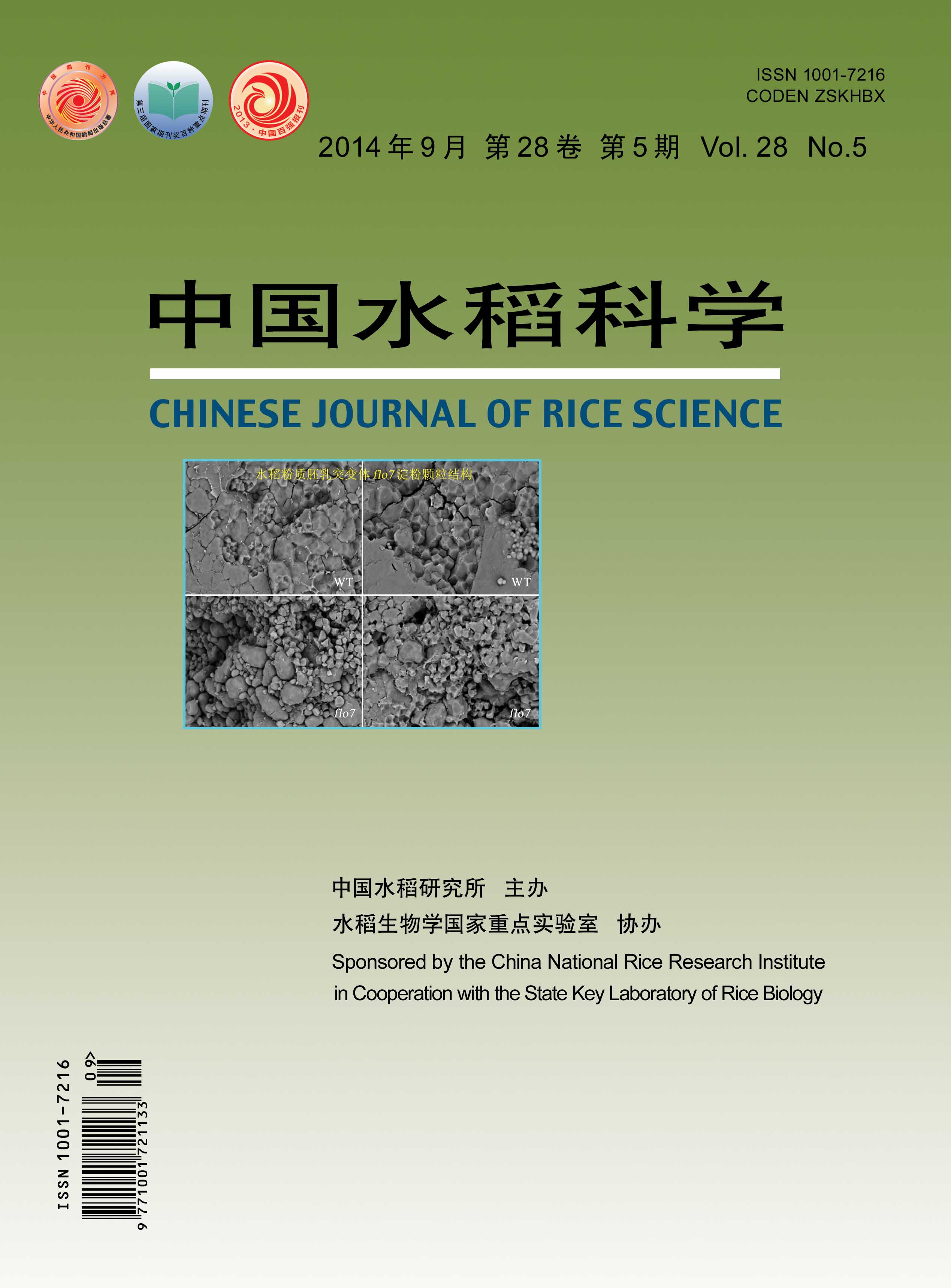|
|
Difference in Grain Productivity and Population Quality of DoubleCropping Late japonica Rice under Different Cultivation Methods
XU Ke1, ZHANG Jun1,2, ZHANG Hongcheng1,*, HUA Jin1, HUO Zhongyang1, GUO Baowei1, DAI Qigen1, WEI Haiyan1, GAO Hui1
2014, 28(5):
503-513.
DOI: 10.3969/j.issn.1001-7216.2014.05.008
A high population quality is necessary to achieve high grain yield in rice, but little information is available about how different cultivation methods affect population quality and grain yield of late japonica rice. Zhendao 11(japonica conventional rice cultivar) and Yongyou 8(japonica hybrid rice cultivar) were grown in the field of doublecropping rice area (Shanggao county, Jiangxi Province), under five cultivation methods including artificial transplanting with middle and strong seedlings in dry nursery (AT), twohole ordered transplanting (OT), singlehole ordered broadcasting (OB) and cast transplanting (CT), with mechanical transplanting (MT) as CK. The results showed that, the average yield of the two cultivars under AT ranked first,followed by OT, OB, CT and MT. Compared with grain yield under MT, the grain yield of Zhendao 11 and Yongyou 8 under AT, OT, OB and CT were higher by 17.1% and 16.8%, 12.7% and 11.7%, 5.9% and 5.4%, 3.6% and 1.8% , respectively. And percentage of productive tillers (>65%), biomass in whole growth duration and from heading to maturity, efficient and high efficient leaf area, crop growth rate (CGR) and net assimilation rate (NAR) of rice in middle and late growing stage, grainleaf ratio, leaf photosynthetic rate, rootshoot ratio, root bleeding sap and its ratio to spikelets (spikelet number, filled grain number, grain yield) also increased significantly, rice stems has stronger lodging resistance. Based on the results, we discussed the regulation approaches and the suitable cultivation methods for raising productivity and population in doublecropping late japonica rice.
|

